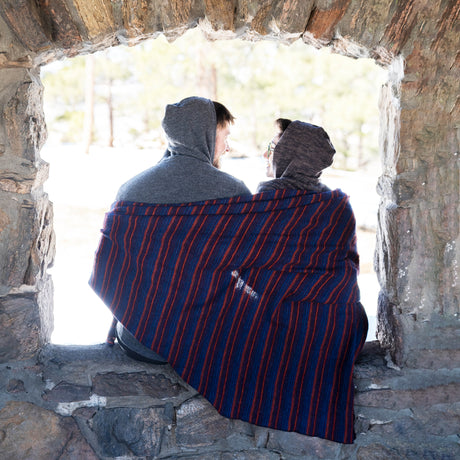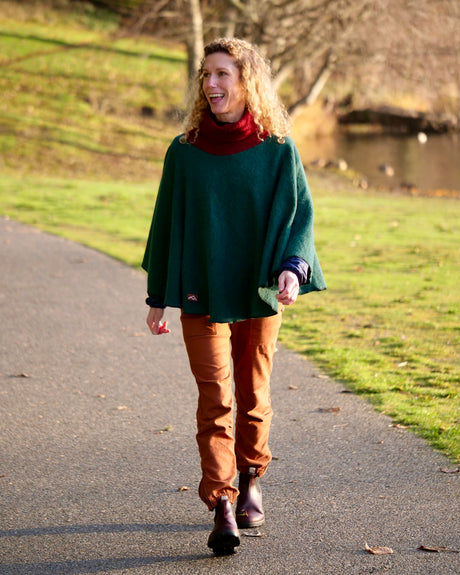505 miles + 30 approach miles—that is how long the Washington PCT is southbound. In mid-August I attempted to set the unsupported Fastest Known Time (FKT) for this trail. Unsupported at this distance requires a unique pairing of strength and speed that is mind-bogglingly difficult. It requires you to perhaps be stronger in your mind than your body to stay all in with the ethos. To accept nothing along the way and use only what you began with, no matter what. Unlike most of my previous self-supported FKTs, I was not able to resupply, did not accept trail magic, or use any services along the way. No one can meet you or accompany you. It’s a deep dive into true self-containment in the wilderness.

I chose the Washington PCT for this immersive journey because of my familiarity with it. Having traversed the entirety four times, and the northern 200 miles several more, there was a certain level of comfort in the midst of the unknown of what unsupported would be like. The Washington PCT is both home to me, and staggeringly beautiful. It’s also exceptionally rugged.
“From the outset, nearly everything went wrong.”
From the outset, nearly everything went wrong. A fire closure on the highway made for a six-hour drive around the mountains to the start. The friends who’d thought they’d be able to help me carry my extremely heavy pack (40k calories/9-10 days of food) for the approach were unable to do so. (Although a shout-out to Carolyn who drove me to Hart’s Pass and carried my pack the first five miles, whittling those bonus miles to 25.) Two days after I started, fires began closing the trail behind me and even as I became more invested in the effort, I feared that the trail would close ahead of me as well—rendering the whole thing futile.

The second morning, I was sick and uncertain whether I would be able to even hike with the intense stomach issues. I made my way south into the Glacier Peak Wilderness—a truly wild place—encountering dozens of giant fallen trees that had to be climbed over or around. This process shredded my shorts and tore a giant hole in my backpack. Additionally, the remoteness of the wilderness means it is often not maintained and my shoes were torn and damaged by the uneven trail tread. This compounded throughout the hike until my feet were suffering dramatically from a lack of protection.
The third day ended with me stopped at Kennedy Creek—a raging torrent of muddy glacial water due to the ongoing heatwave. I waited until 4am, hoping it would relent before I tried to ford. While I napped, a mouse helped itself to my food bag. In the end, the river was still high, and in the dark, I couldn’t find the logs some hikers had used. I picked a spot and went for the ford, breaking a trekking pole and getting knocked off my feet in the process. Luckily, as I fell, I lunged forward out of the current and grabbed a rock which kept me from being swept downstream.
In addition to the high river levels at Kennedy, the heatwave resulted in water sources I’ve never seen dry being reduced to a useless trickle or nonexistent. This made it more difficult to stay hydrated. There was also an unusual amount of biting flies harassing hikers.
“Despite all of this, I was constantly blown away by the beauty all around me.”
Despite all of this, I was constantly blown away by the beauty all around me. The Cascades are a tremendously gorgeous place—deep forests of huge trees, panoramic viewshed traverses, towering volcanoes, and crystal-clear rivers. It is always a joy to walk through this landscape. What I loved most about going unsupported was also what made it so difficult—it was just me and this land.

I skimped on sleep until I couldn’t any more—hiking 20 hours a day for the first seven days. This near constant movement made this whole effort feel like a tapestry of events unfolding. I hiked under the Perseid meteor shower, thrilled with every streak across the sky. I watched the moon slip from crescent into darkness and begin to grow again. I dodged hundreds of huge toads that apparently hang out on the trail at night (who knew?!). A byproduct was a period of auditory hallucinations and issues with equilibrium. This realm of sleep deprivation was new to me, and curious. I slept a full night and the issues resolved.
As I entered Mount Rainier National Park, thick smoke set in and I was slightly panicked. My fear of the trail closing with only 150 miles to go surged. Yet, luckily the smoke was all blowing in from somewhere else. Through the Goat Rocks and around Mount Adams I dealt with near zero visibility and gushing nosebleeds from the poor AQI. Yet, as I neared the Columbia River—Washington’s southern border—the skies began to clear. I was so grateful for the sight of blue sky overhead.

72 miles from the end, my watch—which was recording my verification track log—beeped. I looked down to see the words “Storage Full.” I stopped and sank down to the ground. I didn’t even know this was possible! Without a track log, the FKT would not count. I sat there for 20 minutes, my tired brain trying to figure out what to do—and also trying to decide if I even cared.
Finally, I started a track log in Gaia on my phone and resumed hiking. I wasn’t sure how much memory my phone would have or if I had enough battery to use it for tracking the rest of the way, but it was something. And in the end, if none of this “counted” I knew that it counted for me, and that was all that mattered.
The next morning, I found cell service on the top of Berry Mountain. I laid down and let my watch and phone sync to clear the memory. This took an hour. From there I was able to use my watch to record a track the rest of the way—minor crisis averted.
By these final miles my feet were hurting so much I was struggling to maintain pace. The heat, my feet, the downed trees in the Glacier Peak, etc. had culminated in setting me back by an entire day. Instead of taking 9-10 days, it was clear that it was going to take me into the 11th. I began to ration what little food I had left. In an ironic twist—or perhaps a test from the universe—the day I began rationing I passed four trail magic hiker feeds/coolers as well as a steady stream of northbound hikers telling me about the wonderful food and drink ahead.
Rationing my supplies and walking past every single one of these was the hardest part of the whole hike.
Yet I was grateful for the opportunity to truly commit to being all in with this unsupported modality. If there were never options to get supplies, then it wouldn’t have been as much of a challenge. Instead, I had to choose to walk past restaurants, stores, a hotel, and multiple trail magic opportunities.
“After so many days of journeying toward it, my first glimpse of the Columbia from 10 trail miles away brought tears to my eyes.”
After so many days of journeying toward it, my first glimpse of the Columbia from 10 trail miles away brought tears to my eyes. Usually a waypoint in my hike, this time I knew it was the end point. Even as it slipped from view, I could smell the water in the air, spurring me forward.
A few hours later I hobbled onto the grating of the Bridge of the Gods and established the longest distance women’s unsupported FKT on record and broke the previous men’s time for the Washington PCT by reaching Oregon 11 days, 6 hours, and 28 minutes after leaving the Canadian border.

Although there were certainly many times I didn't think I had what it took to do this, I am proud of myself for staying all in and I have so much gratitude for the mountains I love and a body that takes me places I never thought possible.

Heather Anderson is a National Geographic Adventurer of the Year, three-time Triple Crown thru-hiker, and professional speaker whose mission is to inspire others to “Dream Big, Be Courageous.” She is also the author of two hiking memoirs Thirst: 2600 Miles to Home and Mud, Rocks, Blazes: Letting Go on the Appalachian Trail and a preparatory guide to long-distance hiking Adventure Ready. Find her on Facebook and Instagram @_WordsFromTheWild_ or her website wordsfromthewild.net


















































